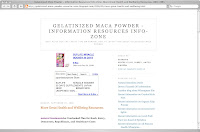Today's medication adherence related abstract,
"Supporting the Patient's Role in Guideline Compliance: A Controlled Study", comes from The American Journal of Managed Care, and even has a link to the full article.
Objective: Clinical messages alerting physicians to gaps in the care of specific patients have been shown to increase compliance with evidence-based guidelines. This study sought to measure any additional impact on compliance when alerting messages also were sent to patients.
Study Design: For alerts that were generated by computerized clinical rules applied to claims, compliance was determined by subsequent claims evidence (eg, that recommended tests were performed). Compliance was measured in the baseline year and the study year for 4 study group employers (combined membership >100,000) that chose to add patient messaging in the study year, and 28 similar control group employers (combined membership >700,000) that maintained physician messaging but did not add patient messaging.
Methods: The impact of patient messaging was assessed by comparing changes in compliance from baseline to study year in the 2 groups. Multiple logistic regression was used to control for differences between the groups. Because a given member or physician could receive multiple alerts, generalized estimating equations with clustering by patient and physician were used.
Results: Controlling for differences in age, sex, and the severity and types of clinical alerts between the study and control groups, the addition of patient messaging increased compliance by 12.5% (P <.001). This increase was primarily because of improved responses to alerts regarding the need for screening, diagnostic, and monitoring tests.
Conclusion: Supplementing clinical alerts to physicians with messages directly to their patients produced a statistically significant increase in compliance with the evidence-based guidelines underlying the alerts.
(Am J Manag Care. 2008;14(11):737-744)
MY COMMENTSI am always pleased when another study confirms that patient messaging improves patient compliance. Especially with the rising cost of healthcare, every preventative step should be taken to ensure patients have the best data about their care and their risks.
It is troubling however that the patient messaging was in the form of letters that had a 10 business day delay from the doctor getting the notification "to allow physicians to contact their patients first, if they choose, or to indicate via fax or phone that there are clinical reasons why alerts do not apply (eg, an allergy not revealed by claims data)". This study did take place in 2006, and I am surprised they did not use email messaging as well.
Here is an exampled of the alert for the doctor:
Your patient is at least 55 years old, has claims evidence for diabetes, has an additional cardiovascular disease risk factor (eg, history of cardiovascular disease, dyslipidemia, microalbuminuria), and has no claims evidence for an angiotensin-converting enzyme (ACE) inhibitor. The American Diabetes Association recommends that, in these patients, with or without hypertension, an ACE inhibitor be considered to reduce the risk of cardiovascular events. If your patient fits this clinical profile, and if not already done or contraindicated, consider starting an ACE inhibitor and titrating the dosage as tolerated.
Here is an example of the patient alert:
• Our data show that you may have diabetes.
• If you have diabetes, it may help you to take a type of drug
called an ACE inhibitor.
• You may not be taking this drug.
• Ask your doctor if you should take an ACE inhibitor.
Now with that 10 day delay the doctor can reach out to the patient and suggest a medication. The reinforcement from the health plan helps the patient adhere with the doctor's recommendation. Same applies for screenings, diagnostic and monitoring tests.
This also raises the question: "My insurer told me to get this test or take this pill. If I do not do it, will they deny claims in the future?"
Would you have this fear if your health plan was monitoring your adherence based on claims data? Would you prefer a 3rd party to deliver these messages?
Please let me know your thoughts.
Thanks!

 Megaupload
Megaupload




